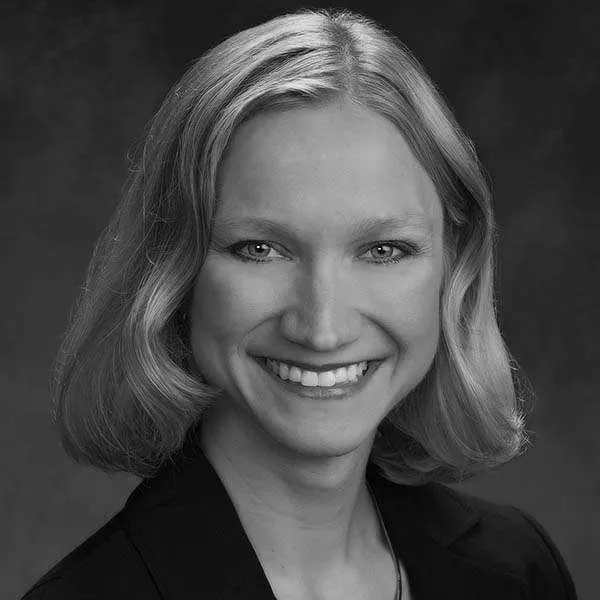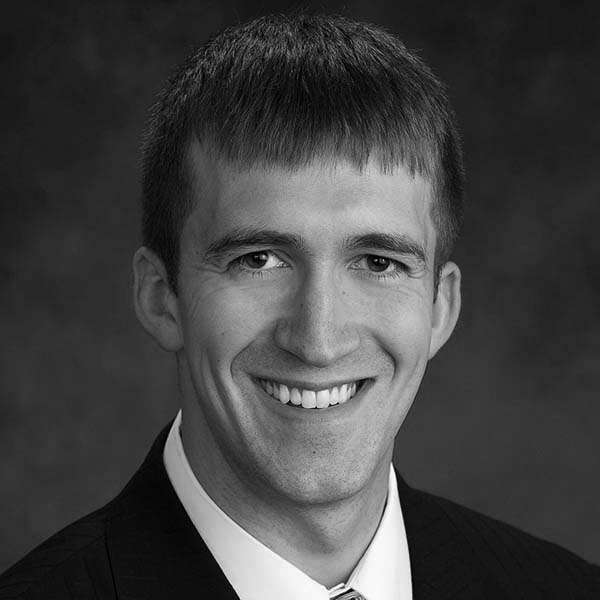Headlines
‘Policing Sex’ explores state’s hidden history of imprisoning women for having venereal disease
LAWRENCE — Between 1918 and 1942, the majority of those sentenced to the Kansas State Industrial Farm for Women were there not because they committed murder or robbery. They were there for having sex — sometimes merely for sex with their husbands. A University of Kansas researcher explores the topic in her new book, “Policing Sex in the Sunflower State: The Story of the Kansas State Industrial Farm for Women” (University Press of Kansas). It reveals how more than 5,000 women were incarcerated for no other crime than contracting a venereal disease.
KU Health Humanities and Arts Research Collaborative will fund KC citizen journalism project
LAWRENCE — The Health Humanities and Arts Research Collaborative at the University of Kansas has awarded seed funding for the Citizen Health Journalism: Workshop Series, led by Carli Zegers, KU assistant professor of nursing, and Brynn Fitzsimmons, KU doctoral student in English rhetoric & composition, in collaboration with community partner Independent Media Association. The series will address how citizen journalism can support community-engaged health communication, better dialogue between health care professionals and the public, and media and health literacy.
Full stories below.
————————————————————————
Contact: Jon Niccum, KU News Service, 785-864-7633, jniccum@ku.edu
‘Policing Sex’ explores state’s hidden history of imprisoning women for having venereal disease
LAWRENCE — Between 1918 and 1942, the majority of those sentenced to the Kansas State Industrial Farm for Women were there not because they committed murder or robbery. They were there for having sex — sometimes merely for sex with their husbands.
“I found so many parallels between now and then with public health, access to health care for poor people and questions about the role the prison system should play in our daily lives,” said Nicole Perry, assistant director at the Center for Undergraduate Research at the University of Kansas. “I think we would be wise to learn some lessons from this.”
Perry explores this hidden history in her new book, “Policing Sex in the Sunflower State: The Story of the Kansas State Industrial Farm for Women” (University Press of Kansas). It reveals how more than 5,000 women were incarcerated for no other crime than contracting a venereal disease.
In 1917, the Kansas legislature passed Chapter 205, a law that gave the state’s Board of Health broad powers to quarantine individuals for disease. Most sentenced under this ruling were sent to the Kansas State Industrial Farm for Women located just south of Leavenworth (which became part of the Lansing Correctional Facility in 1990).
“A real social problem of people having syphilis and gonorrhea arose because penicillin wasn’t developed until World War II. There weren’t good cures, and treatment options that were available were expensive and lengthy. So instead of investing in free public health clinics, the only option was through this prison,” said Perry, who earned a doctorate in sociology at KU.
This strategy was fundamentally misrepresented by the government (and, subsequently, public opinion), which implied these women were “irresponsible” and “needed moral reform.” In fact, 20% of them were volunteers who sought treatment, as there was no other alternative for health care.
Yet the stigma remained.
“When you look at the official state documents, a lot of people talk about the women as being prostitutes. But when you actually read the inmate interviews, a lot of them were married,” Perry said. “There were many who said, ‘I never had sex with anyone except for my husband. He gave me this disease. We got in a fight, and then he turned me into authorities.’”
Kansas was hardly the only state that initiated laws to curb venereal disease. All 48 had something similar to Chapter 205.
“For most states, this happened during World War I and then got revived in some form during World War II,” she said. “What was surprising to find is that several states, such as Kansas, continued to implement this law in the 1920s and ’30s.”
Perry said the most challenging aspect of assembling “Policing Sex” was trying to sort out what actually happened when almost all the information about this period was produced by the state. And the state had a very different viewpoint of Chapter 205 than the women it was affecting.
“The real strength of this book is the inmate interviews,” she said, “because it’s really rare as a historian to have access to everyday women’s experiences of sexuality. Those voices don’t get preserved in the historical record very often.”
Sometimes Perry only had a form filled out by a prison official as the lone chronicle of a particular woman’s experience. Such forms reeked of bias.
“There’s actually a question that asked, ‘At what age did you first break the law of chastity?’ And there’s a spot on the form that asks, ‘Cause of downfall?’ Those are such loaded questions. How were they supposed to respond?” she said.
Of the hundreds of women’s stories that she researched, one especially resonated with Perry.
“There’s a photograph in the book of a woman who is in her mid-40s. She was married twice and had seven kids. She talked about going to different doctors for wounds that wouldn’t heal, and it kept getting misdiagnosed. Eventually somebody recommended getting a blood test, and she found out it was syphilis,” Perry said, noting she only used pseudonyms when referring to her subjects.
“From the photograph of her that’s in the book, you can tell the disease has been eating away at her – her nose is misshapen. When you look at those high-quality photographs, it just really hits home that these were real people whose lives were completely disrupted in an unnecessary way.”
When Perry began this project several years ago, she had no idea that the way current society has coped with the recent pandemic would be so analogous.
“We’ve made changes to all aspects of life that are very dramatic. I think if we’re not conscientious about who this is impacting and how it might be impacting people differently, it’s easy to continue a really unequal practice,” she said.
The Chapter 205 quarantine law stayed in effect in Kansas until 1956.
A native of Linwood, Perry has worked at KU since 2009. Her expertise is in gender and sexuality and historical sociology.
“We face social problems like drug addiction and mental health crises, and we keep applying this solution of the prison system. The way it’s happening is having a disparate impact on certain communities, and that was the same in the case of Chapter 205,” Perry said.
“Women were more likely to be detained. Black woman were more likely to be detained than white women,” she said. “These ideas of race, class and respectability factor into how we understand social problems and which solutions are the best fit. Because, ultimately, we sent women to prison for something that was a health care problem.”
————————————————————————
The official university Twitter account has changed to @UnivOfKansas.
Refollow @KUNews for KU News Service stories, discoveries and experts.
Tweets by KUnews
————————————————————————
Contact: Emily Ryan, The Commons, 785-864-6293, eryan@ku.edu, @TheCommonsKU
KU Health Humanities and Arts Research Collaborative will fund KC citizen journalism project
LAWRENCE – This summer, the Health Humanities and Arts Research Collaborative (HHARC) at the University of Kansas hosted a grant competition for seed funding to support interdisciplinary research at the intersection of health fields, arts and humanities. In this first round of seed funding, one collaborative team was awarded $3,500 to launch its idea.
The research project Citizen Health Journalism: Workshop Series, led by Carli Zegers, KU assistant professor of nursing, and Brynn Fitzsimmons, KU doctoral student in English rhetoric & composition, in collaboration with community partner Independent Media Association, will address how citizen journalism can support community-engaged health communication, better dialogue between health care professionals and the public, and media and health literacy.
The project is unique in that it brings together a trusted community organization and scholars in both health communication and rhetoric/composition with community members to help them develop more effective tools for communicating with public audiences. Workshops will be offered in the Kansas City area and online.
“This project was rigorous in scope and timely in its relevancy,” said Tamara Falicov, associate dean in the College of Liberal Arts & Sciences. “There has never been a moment in recent memory where access to verifiable, scientific, credible information has been critical to the well-being of our communities.”
Workshop participants will learn from health care professionals and communication scholars who will discuss ethics, research strategies and collaboration possibilities when covering health-related topics, and they will have the opportunity for further collaboration and publishing with Independent Media Association, a citizen journalism project based in Kansas City, Missouri.
“I’ve had the opportunity to work with citizen journalists from Independent Media Association for about a year now. From conversations about COVID-19 to housing rights to mental health care access, questions of health have come up repeatedly as crucial conversations in the community — but ones citizen journalists often struggle to report on due to how dense and inaccessible health information can be,” Fitzsimmons said. “I’m so excited to work with Carli and Independent Media Association on this series, which will help address these barriers by connecting citizen journalists to both health information resources and relationships with health care professionals.”
At its core, this grant opportunity offers a chance for researchers to come together with community partners to target health care inequity on local and broader scales.
“I believe this work is important for multiple reasons. Connecting professionals from the humanities and health sciences will help leverage the strengths of each profession to decrease the incredible disparities seen in our society. I am so excited to work with Brynn and the professionals at IMA to support citizen journalists and improve health literacy for individuals and the community,” Zegers said.
Funding for these grants is made possible by the KU Office of Research, through The Commons.
————————————————————————
KU News Service
1450 Jayhawk Blvd.
Lawrence KS 66045
Phone: 785-864-3256
Fax: 785-864-3339
kunews@ku.edu
http://www.news.ku.edu
Erinn Barcomb-Peterson, director of news and media relations, ebp@ku.edu
Today’s News is a free service from the Office of Public Affairs




